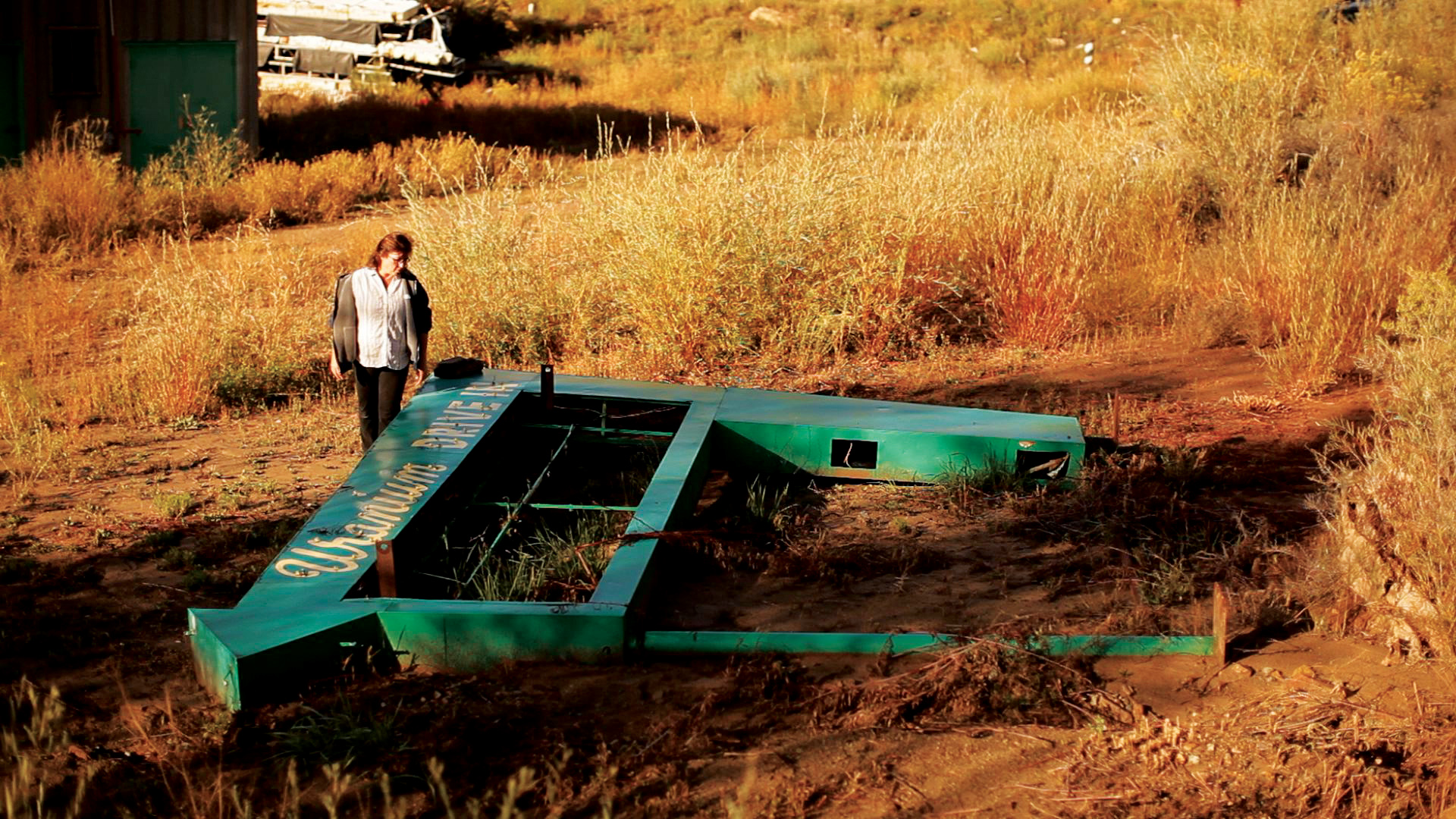Some information may be outdated.
The feature-length documentary “Uranium Drive-in” is a story about the economically devastated rural mining town of Naturita in southwestern Colorado that finds itself hopeful for the first time in decades. Their potential salvation? A return to the “glory” days of the past: uranium mining and milling.
A free screening of “Uranium Drive-in” will be shown at 7 p.m., Thursday at Star Hall. The free screening is made available through the Utah Film Circuit: Moab, an initiative of the Grand County Public Library and the Utah Film Center. The monthly screening series feature award-winning dramatic and documentary films from around the world.
Naturita, Colo., population 519, was once a uranium town. Until the mid-1980s, it was booming from decades of uranium mining and milling. Today, many of its businesses are boarded up, unemployment is high and even the elementary school is for sale.
Enter Energy Fuels, Inc. and their proposal for the Piñon Ridge Uranium Mill. Many townsfolk couldn’t be happier about what would be the first mill of its kind built in the U.S. in 30 years.
Sheep Mountain Alliance (SMA), an environmental group from a Telluride, a wealthy resort town, is determined to bring the project to a standstill.
Still struggling with the severe health and environmental consequences of the last uranium boom and the superfund cleanups it necessitated, the majority of the Naturita community believes that today’s methods will be safer and cleaner.
Telluride resident Suzan Beraza, the director, will be at the screening to hold a question and answer session after film.
“I began to follow the issue of the proposed mill as meetings and debates began, outlining the pros and cons. I went into the project assuming that this mill was a bad idea—after all I consider myself an environmentalist and was concerned about the impacts of the new mill on our watershed. As well, I was wary of nuclear energy,” Beraza said.
The film follows three main characters—Tami Lowrance, Mayor of Naturita and strong proponent of the mill; Ayngel Overson, struggling mother of four who longs for the survival of her town but has mixed feelings about the uranium industry and having her husband working as an underground miner; and Jennifer Thurston, an activist with SMA fighting to stop the mill. She lost her father to what she believes was exposure to radiation.
Beraza said the issue wasn’t so simple as she began to learn more.
“After spending two years in this community really getting to know people and why they so desperately wanted the mill, I grew to understand that the issue wasn’t nearly as black and white as I had originally assumed. Many factors need to be weighed when we, as a nation, decide on a sustainable energy future,” Beraza said.
Beraza doesn’t consider herself a nuclear energy convert, especially in regards to the front end and back end of the nuclear fuel cycle, but she is now aware that it may need to “be part of our energy future if we expect to dramatically reduce our planet’s carbon emissions.”
“Several world-renowned scientists, who were formerly anti-nuclear, have revealed to me that they see no way for our survival without nuclear energy; they were very clear in their stance that renewable energy can never fulfill all of our energy needs. That does give one pause,” Beraza said.
Sallie Hodges from the Utah Film Center: Moab said that it is refreshing to have a documentary that explores both points of view.
“I’m really excited to see a film with an emphasis on personal stories to give an overview behind this nuanced and complex issue,” Hodges said. “We are also extremely lucky to have the director, Suzan Beraza, to answer questions after the screening.”
Jessie Magelby from the Grand County Public Library pointed out how the issue addressed within the documentary hits close to home: both literally and figuratively with Naturita being only 59 miles away.
“Obviously, this issue is very close to home: Moab having the history that it does, with the mining possibilities in our own future and Naturita being one of our close neighbors,” Magelby said. “It’s a terribly difficult choice that they are facing and I appreciate that this film promises to depict both sides of this tricky issue.”
Magelby said that one of the local activists featured in the film will also be part of the question and answer session.
Appreciate the coverage? Help keep local news alive.
Chip in to support the Moab Sun News.





